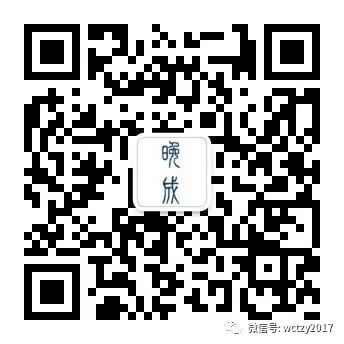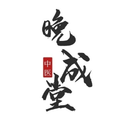Professor Zhao Shaoqin was born into a family of imperial physicians and is a lifelong professor at Beijing University of Chinese Medicine. He serves as a consultant for the Chinese Association of Traditional Chinese Medicine, a director of the Chinese Medical Foundation, an advisor for the Chinese Oriental Culture Research Association, and a member of the 7th and 8th National Committee of the Chinese People’s Political Consultative Conference.
Damp-Heat Syndrome is generally divided into four stages: obstruction by dampness, cooling restraint, cold congealment, and ice entrapment. This is a unique experience passed down in Professor Zhao’s family.
- The obstruction by dampness is the initial stage, where dampness predominates and obstructs the middle and upper jiao, without transforming into heat, or there may be heat but it is not severe. The treatment should focus on aromatic transformation to promote the flow of qi; when qi is transformed, dampness will also transform. This is the key to treating damp obstruction in the lungs.
- If dampness obstructs the middle jiao and hinders the spleen and stomach, the treatment should primarily focus on moving the spleen qi, using pungent to open and bitter to descend, with pungent to promote the flow of qi to transform dampness, and bitter to dry dampness and drain heat, thus eliminating damp-heat.
Specific treatment methods are as follows: (1) Aromatic Transformation Method (Upper Jiao): External invasion of summer heat, damp-heat and turbid accumulation within. Symptoms include: dizziness, body heat, general soreness and fatigue, chest tightness, epigastric fullness, cough, yellow and red urine, white greasy tongue coating, and slippery pulse. This is a syndrome of initial damp-warmth, suitable for the aromatic transformation method. Professor Zhao’s basic formula includes: 10g fresh Peilan (Pogostemon cablin) (add later), 10g soybean sprouts, 10g fresh Huo Xiang (Agastache rugosa) (add later), 3g tender Qian Hu (Peucedanum praeruptorum), 6g Chuan You Jin (Ligusticum chuanxiong), 10g Bai Jizhi (Tribulus terrestris), 10g Jiang Zhu Ru (Ziziphus jujuba), 5g Zhi Hou Po (Magnolia officinalis), and 3g Chuan Huang Lian (Coptis chinensis) (ground and mixed), and 3g Tong Cao (Tetrapanax papyriferus). (These herbs are fresh, reflecting a key issue in the application of Chinese medicine; fresh and tender herbs are good at reaching the upper jiao, which is unmatched by dried herbs when treating exterior syndromes and Wei-level symptoms.)(2) Aromatic Dispersion Method (Upper Jiao) External summer heat invasion, obstructed exterior qi. Symptoms include: chills, dizziness, general soreness, body heat with dry skin, fullness in the middle jiao, nausea and vomiting, abdominal discomfort. White greasy tongue coating, slippery pulse, slightly rapid upon palpation. Suitable for aromatic dispersion to reduce heat and settle vomiting: 12g Peilan leaves (add later), 10g Guang Huo Xiang (Agastache rugosa) (add later), 5g Chen Xiang Ru (Elsholtzia stauntonii) (add later), 10g soybean sprouts, 6g Zhi Hou Po (Magnolia officinalis), 5g Bai Dou Kou (Amomum villosum), 3g ginger (prepared), 6g apricot kernel, and 1g Tai Yi Yu Shu Dan (a special formula) ground into fine powder and mixed. (3) Aromatic Transformation of Turbidity Method (Upper and Middle Jiao): Summer heat and damp stagnation, mutually obstructing the middle jiao. Symptoms include: body heat with nausea, vomiting of phlegm and water, irritability, bright eyes, dry mouth with no desire to drink. Abdominal pain with difficulty in defecation. White greasy tongue coating, slippery and rapid pulse, and a string-like and slippery pulse upon palpation. Should use aromatic transformation of turbidity to settle vomiting and descend counterflow: 10g Peilan leaves (add later), 6g Huo Xiang (Agastache rugosa) (add later), 6g Zhi Hou Po (Magnolia officinalis), 12g Ban Xia Qu (Pinellia ternata), 3g Chuan Lian (Coptis chinensis), 10g Fo Shou (Citrus medica), 10g Da Fu Pi (Areca catechu), 3g fresh ginger, 12g Bao He Wan (a digestive formula) (wrapped), 12g Chi Shao (Paeonia lactiflora), and 10g Jiao Mai Ya (Hordeum vulgare). 1g of Chen Xiang powder and 1g of Bai Dou Kou powder are ground together and encapsulated, taken twice with decoction. Chen Xiang powder is used to descend counterflow, and Bai Dou Kou transforms damp stagnation. If not treated properly, it may turn into dysentery. (4) Light Elevation and Dispersion Method (Upper and Middle Jiao) Summer warmth accumulates heat, obstructing the lungs and stomach. Symptoms include: body heat, dizziness, cough with much phlegm, chest and epigastric fullness. Red tongue with white greasy coating, string-like and slippery pulse, slightly rapid, and slippery and strong on the right side. Heat is in the lungs and stomach, the method should be to disperse; damp turbidity obstructs, and should also be lightly elevated. 12g Xiang Dou Chi (Phaseolus radiatus), 6g Chao Shan Zhi (Gardenia jasminoides), 3g tender Qian Hu (Peucedanum praeruptorum), 10g Xiang Bei Mu (Fritillaria cirrhosa), 10g apricot kernel paste, 12g Loquat leaves (wrapped), 15g Bao He Wan (wrapped), and 30g fresh Lu Gen (Rehmannia glutinosa). (5) Dispersion and Transformation Method (Upper and Middle Jiao) Summer damp-heat stagnation, obstructing the lungs and stomach. Symptoms include: cough with much phlegm, fullness and oppression in the chest, constipation, yellow and red urine, thick yellow tongue coating, slippery pulse, and strong on the right side. Should disperse the upper jiao and transform and smooth the middle jiao. 3g Qian Hu (Peucedanum praeruptorum), 12g Xiang Bei Mu (Fritillaria cirrhosa), 10g apricot kernel paste, 12g Xiang Dou Chi (Phaseolus radiatus) (wrapped), 3g Shan Zhi Zi (Gardenia jasminoides), 12g Zhi Pa Ye (Eriobotrya japonica), 10g Huang Qin (Scutellaria baicalensis), 15g Bao He Wan (wrapped), 10g Jiao Mai Ya (Hordeum vulgare), and 3g Zhi Ke (Aurantii Fructus). (6) Light Dispersion and Clear Transformation Method (Upper and Middle Jiao) Predominance of summer heat, slight deficiency of dampness. Symptoms include: body heat, cough, dry sweat, desire for cool drinks, slight fullness in the chest and epigastrium. Red tongue with yellow coating, slippery and rapid pulse, slightly moist, and strong on the right side. Should clear and resolve summer heat, lightly disperse and transform turbidity. 2g thin mint branches (Mentha haplocalyx) (add later), 10g Peilan leaves (add later), 12g Lian Qiao (Forsythia suspensa), 12g Zhi Pa Ye (Eriobotrya japonica), 12g Bai Jizhi (Tribulus terrestris), 3g tender Qian Hu (Peucedanum praeruptorum), 10g apricot kernel, 5g Chuan Bei Mu (Fritillaria cirrhosa) (ground and mixed), 30g fresh watermelon rind, one corner of fresh lotus leaf, 12g Yi Yuan San (a special formula) (wrapped), 6g bamboo leaves, and 6g Huang Qin (Scutellaria baicalensis). 【Note】Yi Yuan San: 600g talc, 100g licorice, 30g cinnabar. 【Preparation method】The above three ingredients, cinnabar is water-fly into extremely fine powder; talc and licorice are crushed into fine powder, mixed with the above powder, sieved, and blended to obtain.(7) Pungent Opening and Bitter Descending Method (Middle Jiao) Damp-heat disease, heat stagnation in the middle jiao, dampness obstructing and not transforming. Symptoms include: dizziness and fullness, chest tightness, general soreness, nausea, constipation, yellow and red urine, white slippery tongue coating, and slippery pulse that is strong upon palpation. Should use pungent to open the stagnation to benefit the three jiao, and bitter to descend the heat to dry dampness and turbidity, with a little assistance from light diuretics to eliminate. 10g Bai Jizhi (Tribulus terrestris), 12g Peilan leaves (add later), 3g Bai Zhi (Angelica dahurica) (add later), 10g Ban Xia (Pinellia ternata), 10g Huang Qin (Scutellaria baicalensis), 3g Chuan Lian (Coptis chinensis) (ground and mixed), 12g Chao Yi Ren (Coix lacryma-jobi), 12g Bai Dou Kou (Amomum villosum), 12g Chi Ling (Poria cocos), and 12g talc. (8) Dispersion and Transformation Method for the Lower Jiao (Middle and Lower Jiao) Summer heat combined with damp stagnation, mutually obstructing and not transforming. Symptoms include: nausea and vomiting, abdominal distension and gas, constipation, and difficult urination. White greasy tongue coating, thick root coating, slippery pulse, and strong on the pulse. Should disperse and transform counterflow, promote qi and open the bowels, with one formula and two methods, considering both stomach and intestines. 12g fresh Peilan (Pogostemon cablin) (add later), 6g fresh Huo Xiang (Agastache rugosa) (add later), 12g Xiang Dou Chi (Phaseolus radiatus), 5g Shan Zhi Zi (Gardenia jasminoides), 5g old Chen Pi (Citrus reticulata), 10g Fo Shou (Citrus medica), 10g Bing Lang (Areca catechu), 10g apricot kernel, 6g Qian Hu (Peucedanum praeruptorum), 3g Tong Cao (Tetrapanax papyriferus), 2g ginger (prepared), 0.5g wine, and 1g Tai Yi Yu Shu Dan (a special formula) ground into powder, encapsulated, taken twice with 10g Fo Shou (Citrus medica) and 3g ginger decocted and taken with the first medicine (this is the method to settle vomiting). (9) Dispersion and Transformation of Remaining Pathogenic Factors, Light Opening of the Stomach and Intestines (Middle and Lower Jiao) Late stage of damp-warmth, body heat has subsided, symptoms are greatly alleviated, residual heat has not been eliminated, damp-heat accumulation remains. Symptoms include: constipation, obstructed bowel qi, abdominal discomfort, yellow and thick tongue coating, slippery pulse, and strong on the right side. Should disperse and transform remaining pathogenic factors to open the stomach and intestines. 10g Bai Jizhi (Tribulus terrestris), 6g powdered Dan Pi (Moutan Cortex), 1g fragrant Qing Hao (Artemisia annua), 3g Zhi Shi (Aurantii Fructus), 12g fresh Pa Ye (Eriobotrya japonica), 15g Bao He Wan (wrapped), 30g whole Gua Lou (Trichosanthes kirilowii), 6g Zhi Mu (Anemarrhena asphodeloides), 12g Chao Yi Ren (Coix lacryma-jobi), 12g Shan Zha (Crataegus pinnatifida) carbonized, 10g apricot kernel, 12g Yin Chen (Artemisia capillaris), 0.6g Bai Dou Kou powder, and 1g each of raw and cooked Da Huang (Rheum palmatum) powder. The above three ingredients are ground together and encapsulated, taken twice with decoction. (10) Dispersion and Transformation of Remaining Pathogenic Factors, Sweet Moistening and Harmonizing (Middle and Lower Jiao) Early recovery from damp-warmth, pathogenic factors have retreated but not completely, middle yang has not yet recovered, and yin is also deficient, with poor transformation. Symptoms include: poor appetite, general fatigue, pale and swollen tongue, weak and slippery pulse, and weak upon palpation. Should disperse and transform remaining pathogenic factors, sweetly moisten and harmonize the middle jiao to improve the condition. As the illness improves, attention should be paid to the temperature of food and drink. 12g Chuan Shi Hu (Dendrobium candidum), 6g Dan Pi (Moutan Cortex), 0.5g fragrant Qing Hao (Artemisia annua), 10g sweet apricot kernel, 12g Jian Qu (a type of fermented grain), 10g Jin Nei Jin (a type of chicken inner organ), 20g winter melon seeds, 15g Poria peel, 12g raw and cooked barley malt, and 12g Xiang Sha Zhi Shu Wan (a special formula) (wrapped). This is for reference for fellow practitioners and to promote Professor Zhao’s effective and unified methods for diagnosing and treating damp-heat syndrome.


